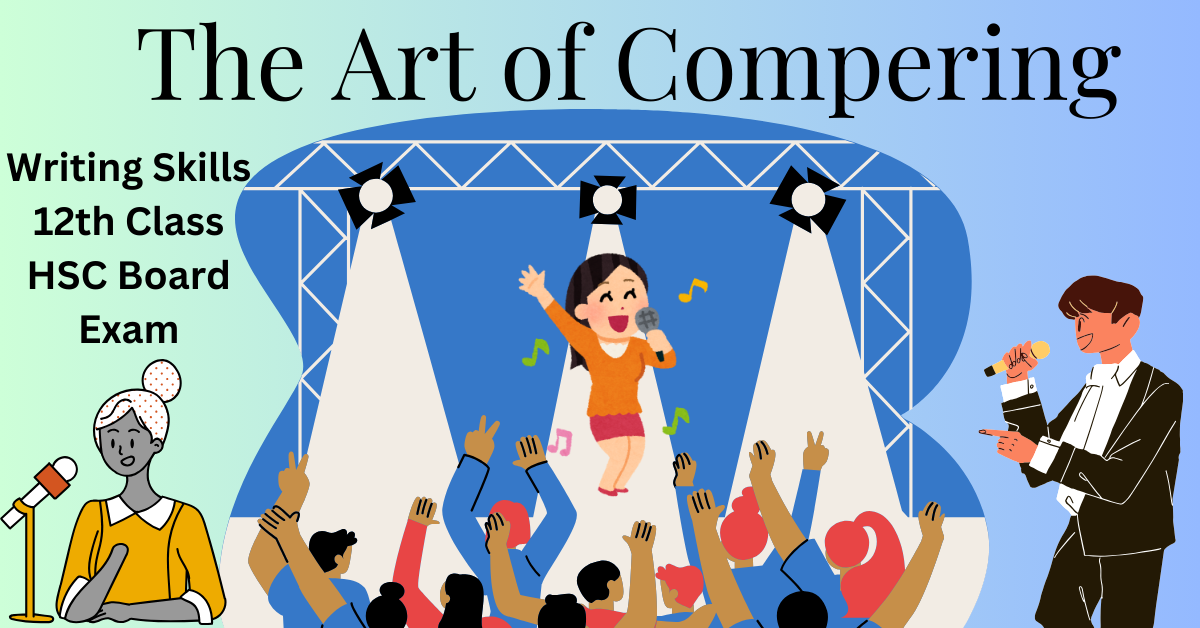Poem: Indian Weavers, Explanation & Appreciation 12th class Maharashtra State Board 2022
Dear students, the poem Indian Weavers is in your Maharashtra State Board syllabus for class 12th. It is the second poem in the poetry section, Indian Weavers written by Sarojini Naidu. In the 12th board examination, you will be asked to solve the activity on the poem with 10 marks or appreciation of the poem for 4 marks. Let’s learn about the poem: Indian Weavers
Introduction:
- Sarojini Naidu (1879 to 1949) was a political activist, feminist, and the first Indian woman who became the President of the Indian National Congress. She was an important figure in India’s Struggle for Independence. Sarojini Naidu’s work as a poet earned her the sobriquet of Nightingale of India. Later she became the Governor of the United Provinces in 1947 becoming the first woman to hold the office of the Governor in Independent India.
- ‘Indian Weavers’ is a short poem where the poet talks about three types of garments that the weavers weave at three particular times of a day. Each stanza of the poem represents the three important events of human life: birth (childhood), adulthood (young), and death (old). The colours mentioned in the stanzas are very significant as they indicate the moods related to the events.
Indian Weavers
Weavers, weaving at break of day,
Why do you weave a garment so gay?……
Blue as the wing of a halcyon wild,
We weave the robes of a new-born child.
Weavers, weaving at fall of night,
Why do you weave a garment so bright?……..
Like the plumes of a peacock, purple and green,
We weave the marriage-veils of a queen.
Weavers, weaving solemn and still,
What do you weave in the moonlight chill……
White as a feather and white as a cloud,
We weave a dead man’s funeral shroud.
– Sarojini Naidu
Let’s learn the poem: Explanation
The first stanza:
Weavers, weaving at break of day,
Why do you weave a garment so gay?……
Blue as the wing of a halcyon wild,
We weave the robes of a new-born child.
- In the first stanza, the poet explains that weavers are weaving at the break of the day means early in the morning or we can say at the dawn of the day. So the poet asks the weavers why they do weave such a beautiful blue garment as the wing of a halcyon wild happily early in the morning. The weavers respond that they are weaving such a beautiful garment (robes) so happily for a newborn child.
- Halcyon: Kingfisher, a bird that has bright, colouful plumes.
- Robes: it is a royal cloth used by King.
- In this first stanza, the poet compares the young age (stage) that is the starting of human life with starting of the new day and the poet shows the happy mood of a human being at the start of new life. The blue colour shows a happy mood. It also symbolizes beauty and preciousness.
The Second Stanza:
Weavers, weaving at fall of night,
Why do you weave a garment so bright?……..
Like the plumes of a peacock, purple and green,
We weave the marriage-veils of a queen.
- In the second stanza, the poet explains that weavers are weaving at the fall of the night means in the night. So the poet asks the weavers why they weave such colorful purple and green cloth as bright and charming as the plumes of a peacock at night. The weavers respond that they are weaving such garment (cloth) for the marriage –veils of a queen (bride).
- Marriage – veils: it is a garment that is used to make the marriage gown of a bride for a marriage ceremony.
- Plumes: soft feathers.
- In the second stanza, the poet compares the adult age (stage) of human life with the night of the day and the port shows the happy and charming mood of human life.
The third stanza:
Weavers, weaving solemn and still,
What do you weave in the moonlight chill……
White as a feather and white as a cloud,
We weave a dead man’s funeral shroud.

- In the third stanza, the poet explains that the weavers are weaving so seriously (solemn) and quite (still) or sad mood at the mid-night or in the moonlight. So the poet asks the weavers why they weave so seriously such white garment as white as a feather and as white as a cloud. The weavers respond that they are weaving such a white garment (cloth) for a dead man’s funeral shroud.
- Funeral shroud: it is a cloth used to cover a dead body at a funeral ceremony.
- In the third stanza, the poet compares the last stage (death) of human life with the end of the day which is midnight. The poet shows a sad mood at this last stage of human life by using colour imaginary which is white colour. The white colour shows an unhappy mood.
Conclusion:
- In this way, the poet shows three stages of life young age, adult age, and last stage (death) of life with three stages of the day early in the morning (dawn), fall of night, and midnight. The poet also uses colour images to show the different moods of a human being at a different stage of life with the colours. Blue is a colour that shows happiness, purple and green show brightness, and charming and white show sad moods. The poet wants to show that life begins with happiness, and joy and ends with sorrow and grief.
Click here: Learn about the Appreciation Of the poem Indian Weavers
You may also learn about the poem Song of the Open Road








[…] Indian Weavers by Sarojini Naidu Explanation and Appreciation. […]
In this poem explanation is fluent
and language is simple for understanding …..
Thank you sir…..🙏🏻
[…] You may also learn about the Poem: 2.2 Indian Weavers […]
The poem is very simple and meaningful meaning.
The poems gives a very important message.
The poem is effective in creating a positive things.I really impressed and inspiret by reading this poem .
Thanku so much sir🙏